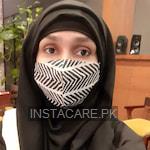Erysipelas - Symptoms, Risk factors and Treatment
Last Updated On Tuesday, December 16, 2025
Erysipelas in Urdu
Erysipelas جلد کے انفیکشن کی ایک قسم ہے جس میں جلد کی صرف سطحی تہہ (dermis) شامل ہوتی ہے۔ تاہم، یہ قریبی لمف کی نالیوں میں پھیل سکتا ہے۔ Erysipelas سیلولائٹس کی ایک شکل ہے، جلد کا ایک گہرا انفیکشن، لیکن erysipelas زیادہ سطحی اور بلند ہوتا ہے۔
Erysipelas زیادہ تر نوزائیدہ بچوں اور بوڑھے بالغوں کو متاثر کرتا ہے، عام طور پر 60 سال سے زیادہ عمر کے افراد۔ سب سے زیادہ متاثر ہونے والی جگہیں نچلے اعضاء اور چہرے ہیں۔
Erysipelas in English
Erysipelas is a type of skin infection that involves only the superficial layer of the skin (dermis). However, it can spread to the nearby lymph vessels. Erysipelas is a form of cellulitis, a deeper infection of the skin, but erysipelas is more superficial and raised.
Erysipelas mostly affects infants and older adults, usually above the age of 60. The sites most commonly affected are the lower limbs and the face.
What Causes Erysipelas?
Erysipelas is most commonly caused by Group A streptococci.
Streptococci:
The streptococci are a group of bacteria causing different clinical diseases. They produce illnesses by releasing toxins or by a delayed antibody-mediated response, which is a condition in which your body starts hurting your own tissues while fighting off the bacteria. Streptococci are divided into different groups such as:
- Group A Streptococci ( Streptococcus pyrogens)
- Group B streptococci ( Streptococcus agalactiae)
- Group D streptococci ( Enterococci and Non-enterococci)
- Streptococcus Viridans
- Streptococcus Pneumoniae
All these different groups produce a variety of diseases. For example, Streptococcus Pneumoniae causes pneumonia. The disease we are focusing on in this article is caused by group A streptococci. These are also called Streptococcus pyogenes which means pus-producing. This group causes a variety of diseases by local invasion or toxin release or by a delayed antibody-mediated response such as:
- Streptococcal pharyngitis (Sore throat)
- Folliculitis (infection of hair follicles)
- Cellulitis ( Infection of skin cells)
- Erysipelas (Infection of superficial skin layer)
- Impetigo ( Blisters around the mouth)
- Necrotizing Fasciitis ( Damage to soft tissues)
- Scarlet fever
- Rheumatic fever
- Acute-post streptococcal glomerulonephritis
However, erysipelas may be rarely caused by other organisms such as staphylococci.
Risk factors for getting erysipelas:
Any break in the continuity of the skin layer predisposes a person to skin infections such as erysipelas. It could be due to:
- Wounds
- IV drug abuse
- Athlete's foot
- Skin ulcers
- Surgery
Symptoms of Erysipelas:
Rash:
Erysipelas are represented by a characteristic rash that is bright red with sharp borders. It progresses from the initial site of infection. It may be accompanied with:
- Warmth
- Tenderness
- Pain
- Swelling
Signs of Infection:
Erysipelas may be accompanied with other, generalized signs of infection such as:
- Fever
- Chills
Complications of erysipelas:
Erysipelas can have the following complications:
Recurrence:
Erysipelas can occur again and again. It is more common in erysipelas of the lower limbs and especially when it causes swelling of lymph nodes. Moreover, conditions that weaken the immune system are also associated with recurrent erysipelas such as alcoholism, diabetes, AIDS, etc.
Abscess formation:
If left untreated, the infection may turn into an abscess which is a collection of pus. If the abscess ruptures, the infection can spread to other surrounding areas of the body.
Gangrene:
Untreated erysipelas may result in gangrene that is the destruction of the affected tissues.
Thrombophlebitis:
One of the complications of erysipelas is thrombophlebitis- a condition in which blood clots are formed in your veins due to inflammation.
The spread of Infection:
If left untreated, the infection may travel from its localized site to other surrounding or distant organs through local spread or by blood and lymph.
Post-streptococcal Glomerulonephritis:
Since erysipelas are mostly caused by group A streptococci, post-streptococcal glomerulonephritis can be a complication too. It is a condition due to an antibody-mediated response to the infection in which the body's own cells damage the kidneys.
Toxic Shock Syndrome:
Streptococci and staphylococci produce toxins that can result in shock ( decreased blood supply to organs) and multiple organ damage such as the liver, kidneys, CNS, etc.
Treatment of Erysipelas:
Erysipelas is mainly treated by:
Antibiotics:
Antibiotics are given to clear up the bacteria and treat the infection.
Analgesics:
Painkillers may be given to reduce pain.
Long-term penicillins
These may be given if the erysipelas is recurrent to avoid relapses.
Conclusion
Erysipelas is a condition that involves the superficial layer of the skin. It may be painful, but with appropriate treatment, it can be treated well. The rash may take some time to totally resolve but it does not leave behind scars.
For recurrent erysipelas, prophylactic antibiotics can prevent a recurrence. Moreover, maintaining good hygiene at skin breaks can prevent erysipelas from occurring in the first place.







